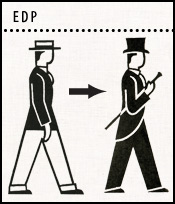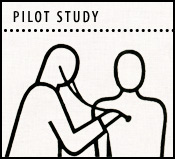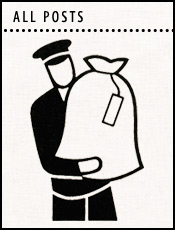October 28th, 2010
Special Report: The Hijab
For ages, the hijab, a head covering worn by Muslim women, has been a symbol of the East, a symbol of modesty and mystery. The practice of veiling has deep seated religious roots, originating when the wives of the Prophet Muhammad veiled themselves from worshipers who came to visit their home (which was converted into the first mosque). However, the hijab is an avenue for political expression as much as a religious garment.

Many think (and have thought) of the Middle East and the West as two opposing spheres of thought and cultural heritage. Despite the gross over-simplicity of this idea, the belief has been and is being used in conjunction with the practice of veiling to support political movements and rally people around nationalistic ideologies in the Middle East. Kemal Atatürk, in his campaign to westernize Turkey in the late 1920s dissuaded Turkish women from wearing the Hijab.  For the garment was seen as a cultural artifact, alienating to the West. Today, with an awareness of the cultural connotations of the hijab, some women use the garment as a socio-political tool and veil in tacit rejection of the West, be it of the American occupation of Iraq and Afghanistan or of past damage to Syria, Lebanon, Jordan and then Palestine during the period of colonization and systems of mandate.
It is certain, though, that many women today still wear the hijab for reasons of perceived chastity and modesty. It seems that veiling can at once empower women and strip them of identity or agency. But there is no doubt that it is an injustice when women are forced to veil or not to veil for social reasons.
One way the veil can empower women is by allowing them to move freely within public spheres and escape sexual harassment on the street, a growing problem in the Middle East. It is thought that women wearing the hijab are harassed less because they are “good Muslim women,” mothers and wives who project an air of modesty. So we can consider the veil as a tool that allows women to be treated with respect in public spheres, rather than as sexual objects open to verbal or physical harassment.
But the question I have is: what came first, the chicken or the egg? Do women veil to escape harassment, or did the trend of veiling prompt widespread harassment of unveiled women?
 A strange concept, certainly counter-intuitive, but bear with me. The veil, in religious terms, serves the purpose of covering a woman’s body in order to quell the devious thoughts of men. Perhaps extreme, but there have been campaigns which push women to veil that promote just such an idea. The caption of this add reads: “A veil to protect or the eyes will molest.â€
A strange concept, certainly counter-intuitive, but bear with me. The veil, in religious terms, serves the purpose of covering a woman’s body in order to quell the devious thoughts of men. Perhaps extreme, but there have been campaigns which push women to veil that promote just such an idea. The caption of this add reads: “A veil to protect or the eyes will molest.â€
This poster characterizes women’s bodies as sweet and tempting, and men’s eyes on them as spoiling. It seems that the consensus here is that a woman’s body is inherently sexual, something to be desired. The act of veiling springs from this belief, and attempts to counter the issue by obfuscating the temptation of the body.
However, it seems to me that wearing the hijab reinforces, intensifies, and to some extent creates the belief that women’s bodies are sexual objects, cementing this belief as a culturally accepted conviction. This phenomenon fits in with the sociological theorem “If men define situations as real, they are real in their consequences.†In this mode of thinking, if veiling is accepted as the norm for women’s dress, a woman who chooses not to veil is automatically deemed immodest, and, however unfairly, can be seen as fair game for harassment. In this vein of thought, the hijab desexualizes individual women, but sexualizes the concept of “woman,” possibly creating issues for women who do not veil.
Others would argue that veiling at times has an effect opposite to that of quelling temptation directed toward the covered woman. Veiling can give women a more subtle power as sexual agents. As Scott and Woody can attest, there is a certain allure and eroticism associated with the garment. Furthermore, when someone sees a veiled woman, one’s imagination can create the woman as attractive, unbounded by how she may actually appear behind the façade of cloth.
No matter how veiling is perceived — by foreign men as alluring, by foreign women as confounding, or by its wearers as preserving or political, the veil will not be lifted any time soon. As religious conservatism gains momentum in places, more and more women are choosing to cover. With global tides carrying people and Islam across borders and seas, it is becoming all the more necessary to understand the implications of this sartorial phenomenon.


















